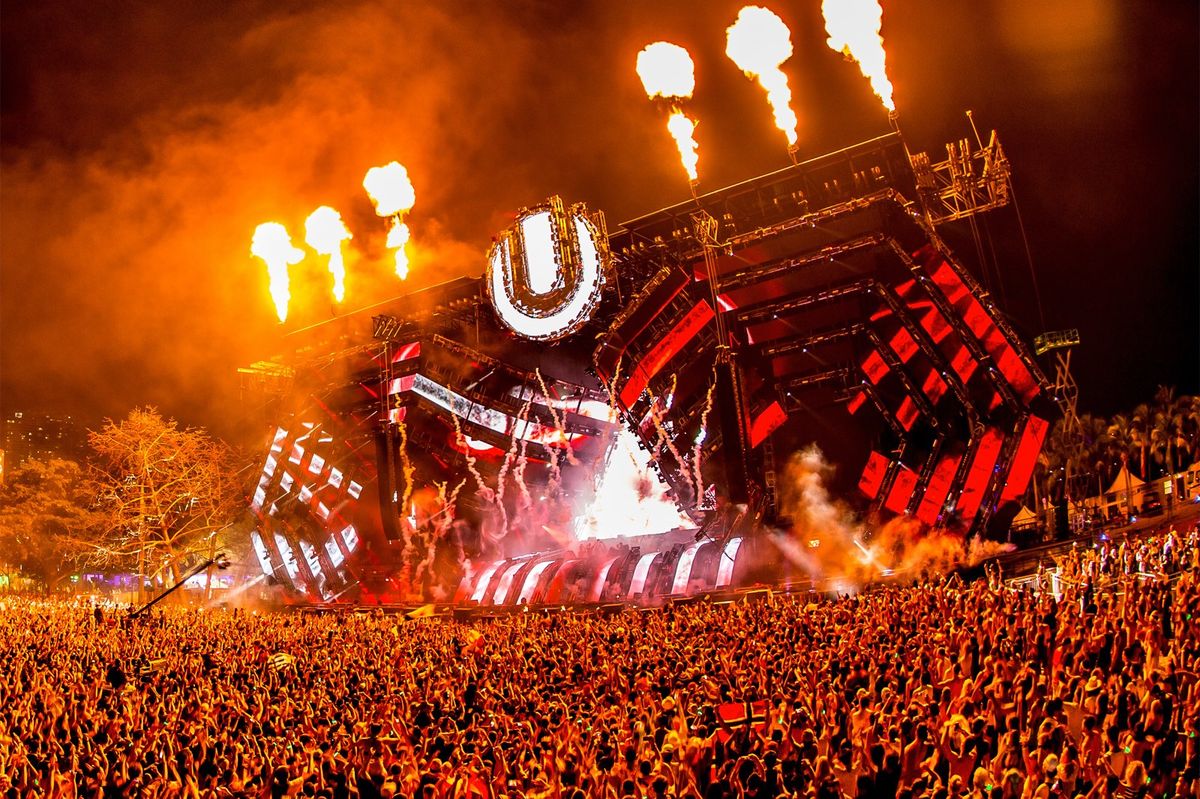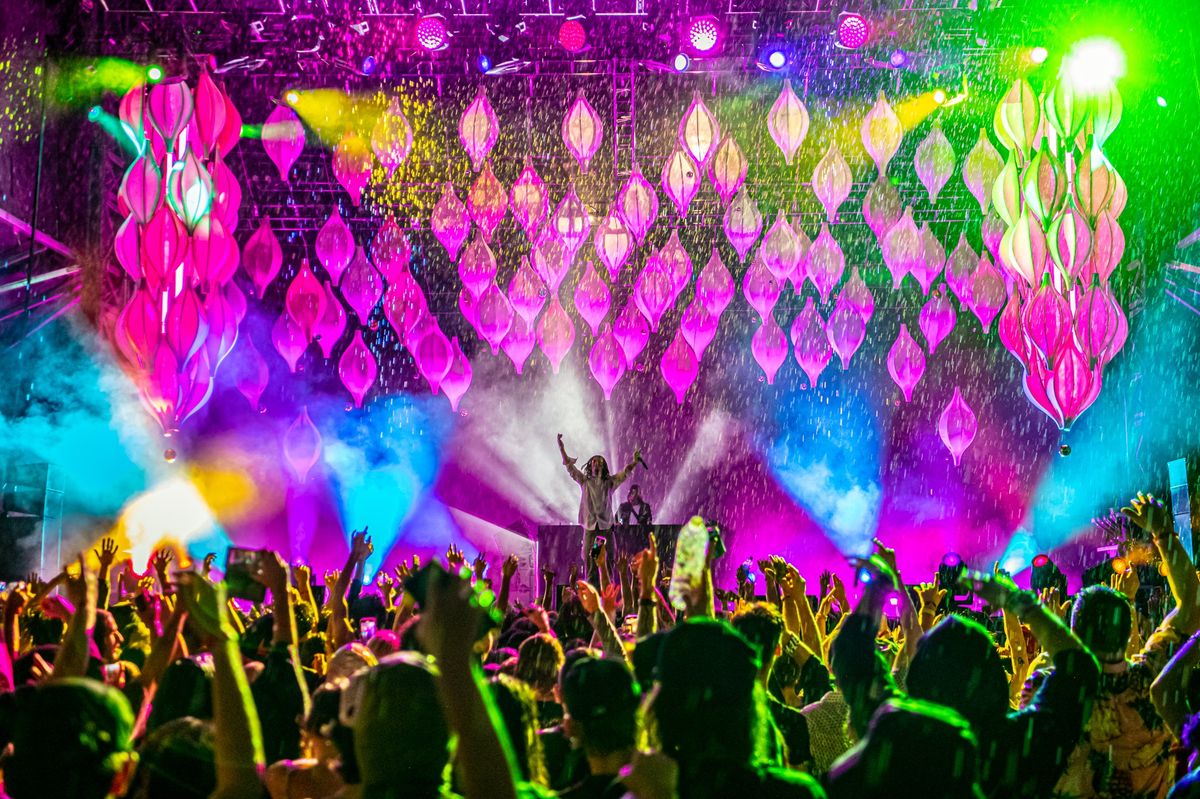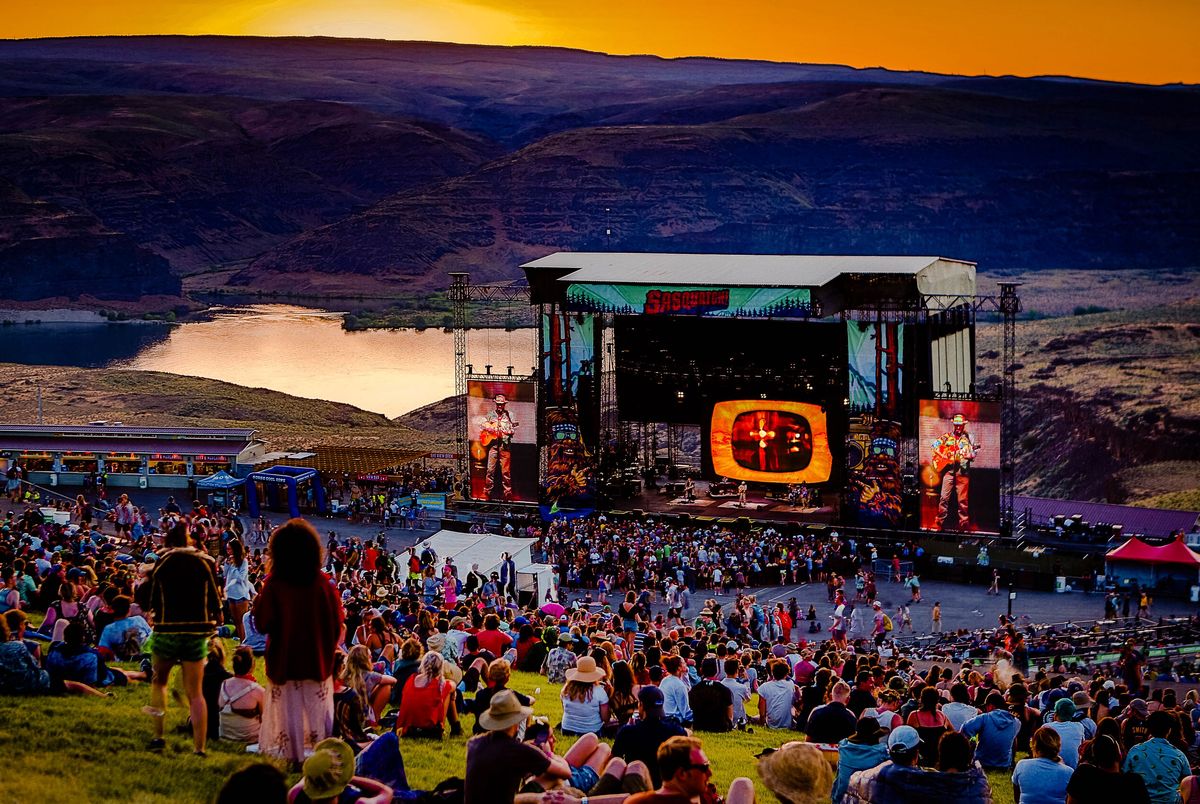Home>Events & Info>Festival>What Is The Biggest Music Festival In The US


Festival
What Is The Biggest Music Festival In The US
Modified: January 25, 2024
Discover the largest music festival in the US and experience incredible performances, immersive stages, and unforgettable moments. Join the festival atmosphere and celebrate the best of music with fellow enthusiasts.
(Many of the links in this article redirect to a specific reviewed product. Your purchase of these products through affiliate links helps to generate commission for AudioLover.com, at no extra cost. Learn more)
Table of Contents
- Introduction
- Definition of a Music Festival
- Background of Music Festivals in the US
- Criteria for Determining the Biggest Music Festival
- Overview of the Biggest Music Festivals in the US
- Analysis and Comparison of the Top Music Festivals
- Factors Contributing to the Success of the Biggest Music Festivals
- Conclusion
Introduction
Music festivals have become a cultural phenomenon, bringing people together to celebrate the power of music in a vibrant and electrifying atmosphere. In the United States, these events have experienced tremendous growth over the years, with millions of music enthusiasts flocking to different cities to indulge in the ultimate festival experience.
But what exactly defines a music festival? Simply put, it is a gathering of artists and performers, showcasing their talent across various genres, from rock and pop to EDM and hip-hop. Music festivals provide an opportunity for fans to immerse themselves in live performances, discover new artists, and create lifelong memories in the process.
The history of music festivals in the US can be traced back to the iconic Woodstock festival in 1969, which set a precedent for large-scale gatherings centered around music. Since then, the popularity of music festivals has skyrocketed, with a wide range of events taking place across the country.
When it comes to determining the biggest music festival in the US, there are several criteria to consider. Attendance numbers, duration, artist lineup, venue size, and overall impact on the music industry all play a significant role in measuring the magnitude of a festival. It is a combination of these factors that sets certain festivals apart from the rest and solidifies their reputation as the largest and most influential events in the country.
In this article, we will delve into the world of music festivals in the US, exploring the biggest and most renowned events that have captured the hearts and minds of music lovers nationwide. We will analyze their scale, diversity, and impact to gain a better understanding of what makes them stand out in a sea of festivals.
So, get ready to dive into the world of music festivals and discover the power and magic they hold as we explore the biggest music festivals in the US.
Definition of a Music Festival
A music festival is a large-scale event that brings together musicians, performers, and music enthusiasts in a celebratory atmosphere. It is a gathering where multiple artists or bands perform live, often over the course of several days, showcasing their talent and providing a diverse range of musical experiences.
At its core, a music festival is a chance for attendees to immerse themselves in the power of live music, soaking up the energy and passion that radiates from the stage. It offers an escape from the everyday routine, creating a sense of unity and community as people come together to share their love for music.
One of the defining characteristics of a music festival is its lineup. Festivals bring together artists from various genres, catering to a wide range of musical tastes. From rock and pop to electronic dance music (EDM), hip-hop, folk, and everything in between, festivals strive to offer a diverse and eclectic mix of performers to cater to different preferences.
Another key aspect of music festivals is the atmosphere they create. Unlike traditional concerts or performances, festivals often take place in outdoor settings, such as parks, fields, or stadiums, and they can span multiple stages or venues. This allows attendees to move freely between performances, exploring different genres and artists at their own pace.
In addition to the music, festivals often incorporate various other elements to enhance the overall experience. These can include art installations, food and beverage vendors, merchandise stands, workshops, and interactive activities. The goal is to create a multi-dimensional event that goes beyond just the music, providing a visually and experientially captivating atmosphere.
Furthermore, music festivals have the power to transcend boundaries and unite people from different backgrounds and cultures. Regardless of age, gender, or social status, attendees come together under a shared love for music, fostering a sense of inclusivity and connection.
Overall, a music festival is a dynamic and immersive experience that celebrates the vibrancy of music and brings people together in an environment of joy, excitement, and camaraderie. It is a momentous occasion that allows people to escape the monotony of everyday life and revel in the magic of live performances, creating memories that last a lifetime.
Background of Music Festivals in the US
The history of music festivals in the United States dates back several decades, with iconic events that have shaped the landscape of the music industry. These festivals have played a crucial role in showcasing talent, promoting new genres, and providing unforgettable experiences for music enthusiasts across the country.
One of the most significant milestones in the evolution of music festivals was the legendary Woodstock festival in 1969. Held in Bethel, New York, Woodstock was a three-day event that attracted over 400,000 attendees. It became a symbol of counterculture, peace, and love, and marked a turning point in music history. Woodstock paved the way for future music festivals, showcasing the power of large-scale gatherings centered around music.
In the 1970s and 1980s, new festivals emerged, each with its own unique identity and musical focus. The Newport Jazz Festival, founded in 1954, became an annual celebration of jazz music, attracting top performers and becoming a platform for the genre’s evolution.
Other notable festivals during this time included the Monterey Pop Festival, which showcased the rising stars of the rock and folk scenes, and the New Orleans Jazz & Heritage Festival, which celebrated the rich musical traditions of Louisiana. These festivals became platforms for artists to gain exposure and for fans to experience live performances from their favorite acts.
In the 1990s, the music festival scene in the US experienced a resurgence, driven by the rising popularity of alternative rock, grunge, and electronic dance music. Lollapalooza, originally conceived as a farewell tour for the band Jane’s Addiction, transformed into an annual touring festival that showcased alternative rock acts. It became a major cultural event, influencing the festival landscape for years to come.
As the internet age dawned in the 2000s, music festivals found renewed vitality and expanded their reach. Online ticketing, streaming platforms, and social media allowed festivals to connect with a global audience and brought unprecedented visibility to emerging artists.
Today, music festivals in the US have grown in scale and diversity, with a multitude of events taking place across the country. From the Coachella Valley Music and Arts Festival in California, known for its star-studded lineups and eclectic performances, to Bonnaroo Music and Arts Festival in Tennessee, which offers a mix of rock, folk, hip-hop, and electronic music, these festivals have become integral parts of the cultural fabric of their respective regions.
With each passing year, new festivals emerge, pushing boundaries, and exploring new genres and formats. They continue to shape and redefine the music industry, providing a platform for both established artists and up-and-coming talent. Music festivals in the US have become a staple in the lives of music enthusiasts, offering an escape, a chance to discover new artists, and an unforgettable experience in the realm of live music.
Criteria for Determining the Biggest Music Festival
When it comes to determining the biggest music festival in the United States, several criteria are taken into consideration. These factors help gauge the scale, impact, and overall prominence of a festival, highlighting its significance in the music industry and the hearts of fans. While the importance of each criterion may vary, a combination of these factors allows for an accurate assessment.
1. Attendance Numbers: One of the key indicators of a festival’s size and reach is the number of attendees it attracts. The bigger the crowd, the greater the impact and influence of the festival. Attendance numbers can range from tens of thousands to hundreds of thousands, with the most significant festivals drawing in massive crowds over multiple days.
2. Duration: The length of a festival also contributes to its status as a major event. Some festivals may span a single day, while others extend over a weekend or even multiple weekends. Longer durations provide more opportunities for artists to perform and attendees to immerse themselves in the festival experience.
3. Artist Lineup: The caliber and diversity of the artist lineup play a crucial role in determining the significance of a music festival. Headliners, as well as supporting acts, help attract audiences and generate buzz. A lineup that features well-established artists from various genres, along with emerging talent, showcases the festival’s ability to curate a diverse musical experience.
4. Venue Size: The size of the festival venue is another consideration. A festival held in a large, sprawling location, with multiple stages and ample space for attendees, can accommodate larger crowds and offer a more immersive experience. The venue’s infrastructure and facilities also contribute to the overall success and comfort of the festival.
5. Cultural Impact: The impact that a festival has on the larger cultural landscape is an important factor. Festivals that pioneer new trends, influence fashion and style, and become iconic moments in music history hold a special place in the collective consciousness. They not only shape the music industry but also leave a lasting impact on popular culture.
6. Industry Influence: The reputation and influence of a festival within the music industry are also taken into account. Festivals that attract industry professionals, including record label executives, agents, and promoters, can catapult emerging artists to stardom and shape the trajectory of their careers. This influence can extend beyond the festival itself and impact the music industry as a whole.
7. Media Coverage and Publicity: The level of media coverage and publicity surrounding a festival can also be indicative of its size and significance. Festivals that receive widespread media attention, generate headlines, and are hotly anticipated by fans and media outlets alike, showcase their prominence and allure.
By considering these criteria, both quantitatively and qualitatively, it becomes possible to determine the biggest music festival in the US. While different festivals may excel in different areas, it is the combination of these factors that solidifies a festival’s status as a major event in the music calendar and ensures its recognition as a focal point for fans and industry professionals alike.
Overview of the Biggest Music Festivals in the US
The United States is home to some of the biggest and most renowned music festivals in the world. These events attract massive crowds, boast impressive artist lineups, and create unforgettable experiences for attendees. Let’s take a closer look at some of the most prominent music festivals in the US:
1. Coachella: Held annually in Indio, California, Coachella is widely regarded as one of the most prestigious and influential music festivals. Known for its diverse lineup spanning various genres, including rock, pop, hip-hop, and electronic music, Coachella attracts global attention and features performances from both established artists and emerging talent.
2. Lollapalooza: Originating as a touring festival in the 1990s, Lollapalooza has become an iconic event held in Grant Park, Chicago. With its roots in alternative rock, the festival has expanded to include a wide range of genres, offering a comprehensive musical experience. Its multi-day format and massive attendance have solidified its status as a major festival in the US.
3. Bonnaroo: Located in Manchester, Tennessee, Bonnaroo has gained a reputation for its eclectic lineup and vibrant community atmosphere. This four-day event showcases an array of musical genres, including rock, folk, Americana, and electronic music. Bonnaroo also embraces the spirit of sustainability and offers a unique camping experience for attendees.
4. Austin City Limits (ACL) Festival: Taking place in Austin, Texas, ACL Festival showcases a diverse range of artists across numerous stages in Zilker Park. With its focus on both established and emerging acts, the festival offers a platform for local and international talent to captivate audiences. The atmosphere of Austin, known as the “Live Music Capital of the World,” adds to the allure of this iconic event.
5. Outside Lands: Set in San Francisco’s Golden Gate Park, Outside Lands combines music with culinary and artistic experiences. The festival showcases a blend of genres and features renowned headliners alongside up-and-coming artists. Outside Lands is known for its commitment to sustainability and provides a unique festival experience in the heart of the city.
6. Electric Daisy Carnival (EDC): Catering to electronic dance music (EDM) enthusiasts, EDC is held in various locations across the US, with its flagship event taking place in Las Vegas. Known for its extravagant stages, dazzling visual effects, and world-class DJs, EDC provides an immersive and electrifying experience for attendees.
These festivals represent just a fraction of the vibrant music festival scene in the US. Each event offers its own unique atmosphere, lineup, and setting, attracting music lovers from all walks of life. Whether you’re a fan of rock, pop, EDM, or any other genre, there is a music festival in the US to cater to your tastes and provide an unforgettable experience.
Analysis and Comparison of the Top Music Festivals
When it comes to the top music festivals in the United States, each event brings its own unique vibe and draws a distinct audience. Let’s delve into the analysis and comparison of some of the most renowned festivals:
1. Coachella: Known for its star-studded lineup and trendy, fashion-forward atmosphere, Coachella has solidified its position as a cultural phenomenon. The festival offers a blend of mainstream and alternative acts, appealing to a wide range of music enthusiasts. With its iconic art installations, celebrity sightings, and high-profile guest appearances, Coachella has become a bucket-list experience for many.
2. Lollapalooza: Lollapalooza boasts a diverse musical lineup that spans multiple genres, including alternative rock, hip-hop, and EDM. This festival stands out for its commitment to promoting social causes, supporting local businesses, and providing a well-rounded experience beyond the music. Lollapalooza’s focus on sustainability and community engagement has earned it a reputation as an inclusive and socially-conscious event.
3. Bonnaroo: With its unique camping experience and emphasis on community, Bonnaroo offers a distinct sense of camaraderie among attendees. The festival’s eclectic lineup allows fans to explore different genres and discover new artists while immersing themselves in a vibrant and inclusive atmosphere. Bonnaroo prides itself on fostering a sense of togetherness and spreading positivity.
4. Austin City Limits (ACL) Festival: ACL Festival showcases some of the best established and emerging talent from various genres, all set against the backdrop of Austin’s vibrant music scene. The festival’s commitment to local artists and its focus on creating an intimate experience for attendees sets it apart. With its diverse lineup and scenic location, ACL Festival offers a unique blend of music, art, and culture.
5. Outside Lands: Alongside its impressive music lineup, Outside Lands stands out for its culinary and art experiences. The festival celebrates the Bay Area’s gastronomic scene, offering a wide range of food and beverage options from local vendors. The inclusion of art installations and engaging activities adds an extra layer to the festival, creating a well-rounded cultural experience for attendees.
6. Electric Daisy Carnival (EDC): EDC is a playground for EDM enthusiasts, known for its sprawling stages, cutting-edge production, and mind-blowing visual effects. The festival brings together some of the biggest names in the genre, creating an electrifying atmosphere. With its emphasis on creativity, self-expression, and a dedicated community, EDC has become a mecca for dance music lovers.
When comparing these festivals, factors such as artist lineup, atmosphere, location, and overall experience play a significant role. Coachella stands out for its influential cultural impact, while Lollapalooza and Bonnaroo focus on community engagement and supporting social causes. Austin City Limits and Outside Lands offer a blend of music and diverse cultural experiences, while EDC caters specifically to EDM fans.
Ultimately, the “best” festival is subjective and depends on individual preferences. Whether you crave a blend of genres, a strong sense of community, a specific genre-focused experience, or unique cultural offerings, the US music festival scene has something to offer for everyone.
Factors Contributing to the Success of the Biggest Music Festivals
The success of the biggest music festivals in the United States can be attributed to a combination of various factors. These elements work together to create memorable experiences for attendees, establish a strong reputation within the industry, and ensure the longevity and growth of the festival. Let’s explore some of the key factors contributing to their success:
1. Artist Lineup: The caliber and diversity of the artist lineup are critical in attracting attendees and generating excitement. Top-tier headliners, coupled with a mix of established and emerging talents, ensure that the festival appeals to a wide range of musical preferences. A carefully curated lineup can create anticipation, draw larger crowds, and contribute to the overall success of the event.
2. Unique Experiences: Successful music festivals often offer more than just live performances. They go beyond the music and provide unique experiences that set them apart. This can include immersive art installations, interactive activities, workshops, culinary delights, or even theme-based events. These extra elements enhance the overall festival experience, creating lasting memories for attendees.
3. Venue and Infrastructure: The choice of venue and the infrastructure provided play a crucial role in the success of a festival. A well-designed and well-equipped venue with adequate facilities, stages, sound systems, and amenities ensures a smooth and enjoyable experience for attendees. The location itself might also contribute to the festival’s allure, whether it’s a picturesque outdoor setting or a renowned urban destination.
4. Community and Atmosphere: A strong sense of community and a welcoming atmosphere are key factors contributing to the success of a festival. When attendees feel connected and united by their love for music, it creates a vibrant and inclusive atmosphere. Festivals that foster a spirit of camaraderie through shared experiences, interactive elements, and opportunities for engagement help build a loyal fan base and contribute to the festival’s continued success.
5. Effective Marketing and Promotion: Successful festivals invest in strategic marketing and promotion, both online and offline. A strong and targeted marketing campaign, coupled with engaging social media presence, helps build anticipation, generate buzz, and attract a larger audience. Collaborations with media outlets, influencers, and partnerships with brands further expand the festival’s reach and visibility.
6. Sponsorships and Partnerships: The support of sponsors and strategic partnerships is crucial in financing and enhancing the festival experience. Sponsors offer financial assistance, contribute to production, and provide additional activations or promotions that add value to the festival. Collaborating with reputable brands can bring in brand loyalty and open new avenues for growth and development.
7. Commitment to Safety and Security: Ensuring the safety and security of attendees is paramount for the success of any festival. Comprehensive safety plans, including robust security measures, medical services, and crowd management, instill confidence in attendees. A positive and safe festival experience not only encourages repeat attendance but also helps maintain a good reputation among attendees and industry professionals.
The success of the biggest music festivals in the US is a result of careful planning, dedication to creating an exceptional experience, and a thorough understanding of the desires and expectations of the target audience. By focusing on these factors, festivals can continue to evolve, attract larger audiences, and solidify their position as premier events in the music industry.
Conclusion
Music festivals have become an integral part of the cultural landscape in the United States, offering music enthusiasts an avenue to celebrate their love for live performances and create lasting memories. Through the analysis of the biggest music festivals in the US, we have explored the defining characteristics and factors that contribute to their success.
From the iconic Coachella with its star-studded lineups and trendy atmosphere to the community-centric Bonnaroo and the diverse musical experiences at Lollapalooza, each festival brings its own unique flavor to the table. The Austin City Limits Festival immerses attendees in Austin’s vibrant music scene, Outside Lands combines music with culinary delights, and Electric Daisy Carnival establishes a dedicated haven for EDM lovers. These festivals stand as testament to the diverse range of tastes and preferences within the music industry.
Several key factors contribute to the success of these festivals, including the artist lineup, unique experiences, venue and infrastructure, community atmosphere, effective marketing, sponsorships, and commitment to safety. It is the careful consideration and execution of these elements that allows these festivals to thrive, attract larger audiences, and maintain their prominence in the industry.
While each festival has its own appeal and target audience, they all share the common goal of providing a platform for artists to showcase their talent and giving attendees an unforgettable experience. These festivals have become more than just gatherings; they have become cultural phenomena that shape the music industry, influence trends, and foster a sense of community among fans.
As we continue to witness the growth and evolution of music festivals in the US, it is clear that they have become an integral part of the cultural fabric of the nation. They offer a place for people from all walks of life to come together, celebrate the power of music, and create memories that will last a lifetime.
Whether you find yourself dancing to your favorite band’s electrifying performance, exploring art and interactive installations, or connecting with like-minded individuals, music festivals provide an immersive and transformative experience. So, dive into the world of music festivals and let the magic of live performances ignite your passion for music and create memories that will resonate with you for years to come.











